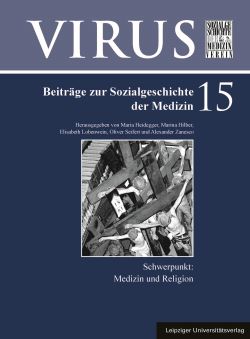
VIRUS Band 15, pp. 035-054, 2020/07/22
Schwerpunkt: Medizin und Religion

The impact of religion on medical practices seems to be part of common knowledge on medieval medicine, while the interdependence of both systems, religion and medicine, as academic discourses has received far less attention. This contribution thus turns the focus to the relationship between medicine and religion in the middle ages from the perspective of the importanceof medical knowledge and arguments for the religious discourse. Two phenomena serve as guiding lines: first, the impact of miracles and second, the religious worship of relics. The 12th century treatise on relics by Guibert de Nogent serves as primary source to study the significance of medical wonders in the system of relic worship. A close analysis of the text will reveal what kind of medical and body-related arguments are used to discuss the issue of correct veneration of relics. The body and its integrity turn out to be at the focus of the arguments pointing to the core issue of the bodily resurrection of Christ, topics that are discussed in the heated debate on bodily relics of Christ.
Keywords: Middle Ages, France, relics, miracles, scholasticism, holy blood, source analysis, discourse analysis, history of the body, history of medicine